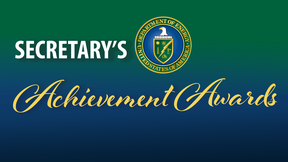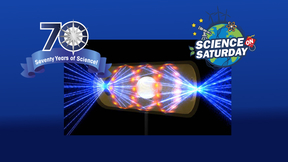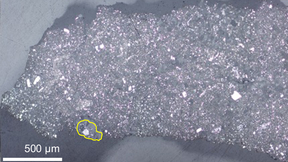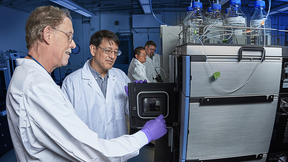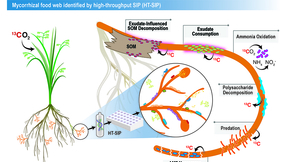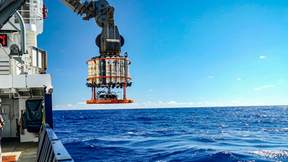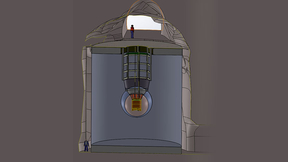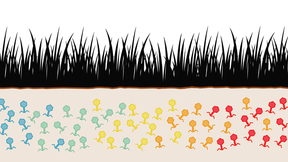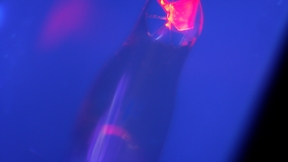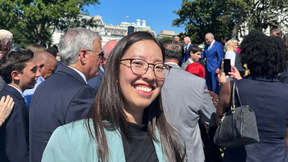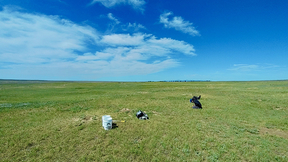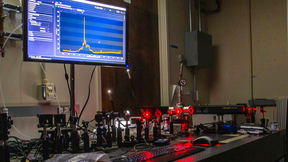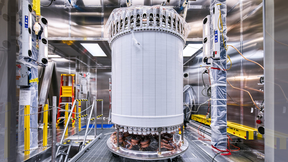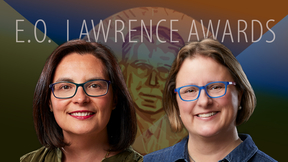Back
Nuclear, Chem, and Isotopic S&T
Five Lab teams recognized with Secretary’s Honor Achievement Awards
Lawrence Livermore National Laboratory (LLNL) employees, participating in five project teams, recently earned Department of Energy (DOE) Secretary’s Honor Achievement Awards. Representing some of the highest internal, non-monetary recognition that DOE employees and contractors can receive, the Secretary’s Honor Awards recognize DOE employees and contractors for their…
Lawrence Livermore’s Science on Saturday lecture series moves to Las Positas College
Lawrence Livermore National Laboratory's (LLNL) popular lecture series, “Science on Saturday,” returns Feb. 4 and runs through Feb. 25. The new location of the lecture series is the Mertes Theater, Building 4000 at Las Positas College, 3000 Campus Hill Drive in Livermore. The series kicks off on Feb. 4 and offers four different lectures with the theme, “70 Years of Science…
Water modified ancient asteroid
Samples from asteroid Ryugu returned by the Hayabusa2 mission contain evidence of extensive alteration by water and appear related to CI chondrites, which are believed to best represent the bulk of the solar system composition. Lawrence Livermore National Laboratory (LLNL) scientists in collaboration with an international team looked at the isotopic composition of oxygen,…
LLNL Forensic Science Center team develops new technique to analyze fentanyl in blood and urine
A team of Lawrence Livermore National Laboratory (LLNL) scientists has developed a new technique to analyze fentanyl in human blood and urine samples that could aid work in the fields of medicine and chemical forensics. Led by Carlos Valdez, an LLNL synthetic chemist and lead author, the team discussed its new fentanyl analysis approach in a paper recently published in the…
New method unearths improved understanding of soil microbial interactions
Linking the identity of wild microbes with their physiological traits and environmental functions is a key aim for environmental microbiologists. Of the techniques that strive for this goal, Stable Isotope Probing — SIP — is considered the most effective for studying active microorganisms in natural settings. Lawrence Livermore National Laboratory (LLNL) scientists have…
Scientists use carbon to detect a new nitrogen source in the open ocean
Lawrence Livermore National Laboratory (LLNL) and UC Santa Cruz scientists have detected a previously hypothesized class of nitrogen fixation in the surface ocean. Nitrogen scarcity limits the growth of ocean phytoplankton, a globally important carbon sink and the base of the marine food web. Nitrogen that can be used by phytoplankton generally has a very low concentration…
Lab-led nEXO project receives Inflation Reduction Act funding
Lawrence Livermore National Laboratory (LLNL) has received $2.35 million from the Inflation Reduction Act, which aims to support domestic energy production and promote clean energy and to provide the Department of Energy (DOE) national laboratories with resources to keep the U.S. at the forefront of scientific discovery. The funding has been allocated for the Lab-led nEXO…
Come rain or shine, viruses live on in soil
Soils contain diverse communities of microorganisms, including bacteria, fungi, protists and viruses. Interactions between these tiny organisms shape the ability of soils to store carbon underground. However, not much is known about the spatial patterns and dynamics of viral communities in soil. New research by Lawrence Livermore National Laboratory (LLNL) scientists and…
Small Things Considered
Of the four forces, the weak nuclear force is the least understood and most difficult to detect. A Lawrence Livermore team headed by physicist Nick Scielzo partnered with scientists from Argonne National Laboratory, Louisiana State University, and other universities to better characterize the weak force’s foundations. Thanks to significant advances in experimental design…
It’s a metal, not a gas: flerovium chemical properties unveiled
It could be called better understanding through chemistry. An international research team including Lawrence Livermore National Laboratory (LLNL) scientists has succeeded in gaining new insights into the chemical properties of the superheavy element flerovium — element 114. The measurements, taken at the at the accelerator facilities of the GSI Helmholtzzentrum für…
Team identifies parent body materials in Ryugu asteroid
An international team including a researcher from Lawrence Livermore National Laboratory (LLNL) has determined that one specific particle on the asteroid Ryugu can shed light on the unaltered initial materials from its parent body. In December 2014, the Japanese Aerospace Exploration Agency launched the spacecraft Hayabusa2 to the asteroid 162173 Ryugu. In December 2020,…
Going big: Unlocking the study of some of the rarest and most toxic elements on Earth
The synthesis and study of radioactive compounds are naturally difficult due to the extreme toxicity of the materials involved, but also because of the cost and scarcity of research isotopes. Now, Lawrence Livermore National Laboratory (LLNL) scientists and their collaborators at Oregon State University (OSU) have developed a new method to isolate and study in great detail…
Asteroid sample lands on LLNL
No need to worry, it is just a very small piece for scientific study. In December 2014, the Japanese Aerospace Exploration Agency launched the spacecraft Hayabusa2 to the asteroid 162173 Ryugu. In December 2020, when the sample-return capsule successfully landed safely back on Earth with pristine pieces of Ryugu that it had collected, Lawrence Livermore National Laboratory…
Understanding how radionuclides move
Lawrence Livermore National Laboratory (LLNL) intern Jordan Stanberry is spending his summer examining pond sediments to better understand groundwater contamination from decades-old nuclear tests. A chemistry graduate student from the University of Central Florida (UCF), Stanberry is participating in an eight-week Glenn T. Seaborg Institute (GTSI) internship program. The…
White House visit underscores a national need for diversity in STEM
This week, President Biden signed into law the bipartisan bill known as the CHIPS and Science Act (CSC ACT). The bill aims to strengthen U.S. competition by encouraging U.S. companies to manufacture semiconductors and by revitalizing “America’s scientific research and technological leadership." Under Title V: Broadening Participation in Science of the bill, the White House…
Research reveals where carbon storage in soils has the most potential
Soil is the largest terrestrial reservoir of organic carbon and is central for climate change mitigation and adaptation. Mineral-organic associations play a critical role in soil carbon preservation, but the global capacity for storage in this form has never been quantified. New research from Lawrence Livermore National Laboratory (LLNL) and an international team of…
Oxygen effects on uranium tested
A team of researchers from Lawrence Livermore National Laboratory (LLNL) and the University of Michigan has found that the rate of cooling in reactions dramatically affects the type of uranium molecules that form. The team’s experimental work, conducted over about a year-and-a-half starting in October 2020, attempts to help understand what uranium compounds might form in…
Andean glaciers reacted in unison with polar ice in changing climate
For the first time, scientists have shown that glaciers in the tropical Andes mountains have been in sync with polar ice extent in Antarctica and the Arctic for nearly a million years. New research by an international team, including Lawrence Livermore National Laboratory (LLNL) scientist Christine Y. Chen, records glacier movement in the Southern Hemisphere that dates…
LUX-ZEPLIN Dark Matter Detector at Sanford Underground Research Facility delivers its first result
Deep below the Black Hills of South Dakota in the Sanford Underground Research Facility (SURF), an innovative and uniquely sensitive dark matter detector — the LUX-ZEPLIN (LZ) experiment, led by Lawrence Berkeley National Lab (Berkeley Lab) — has passed a check-out phase of startup operations and delivered its first results. In a paper posted online today on the experiment…
Two LLNL scientists earn E.O. Lawrence Award
Two Lawrence Livermore National Laboratory (LLNL) scientists are recipients of the prestigious 2021 E.O. Lawrence Award that recognizes mid-career U.S. scientists and engineers for exceptional scientific, technical and engineering achievements related to the broad missions of the Department of Energy (DOE) and its programs. Jennifer Pett-Ridge was recognized for her…


